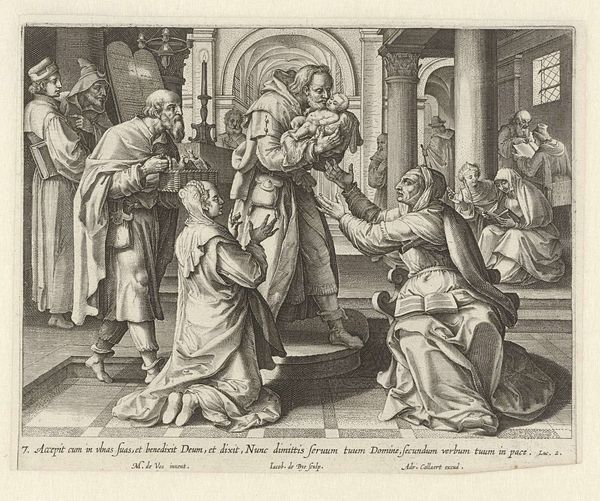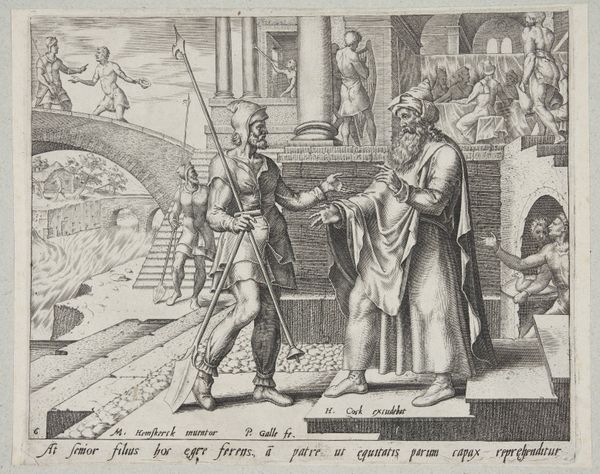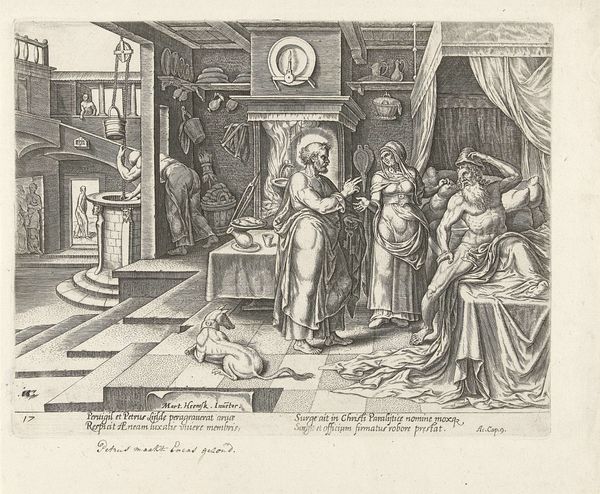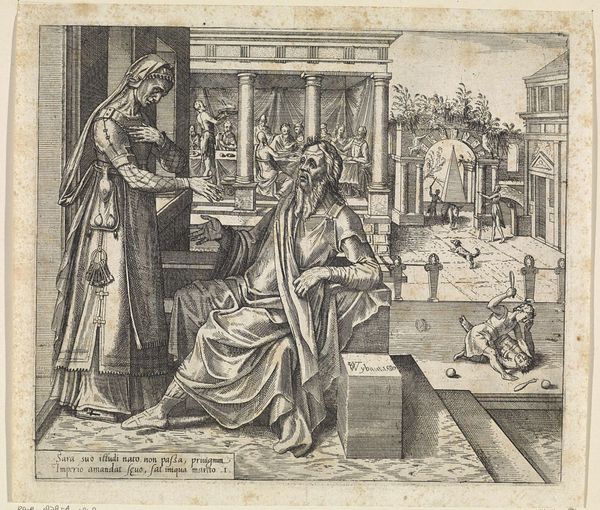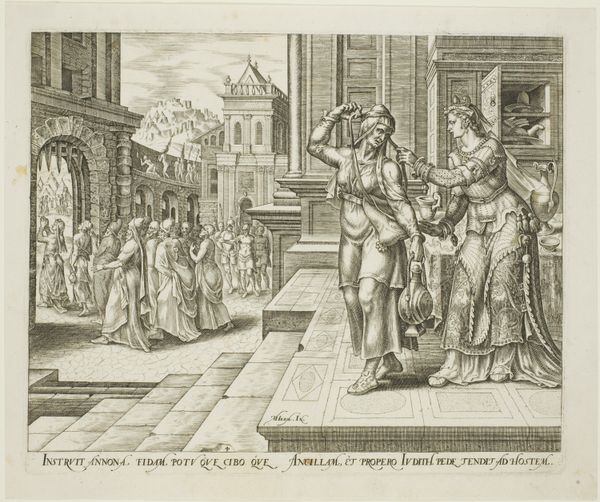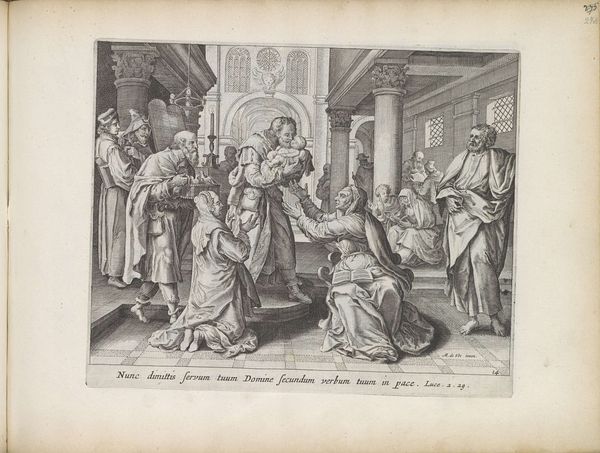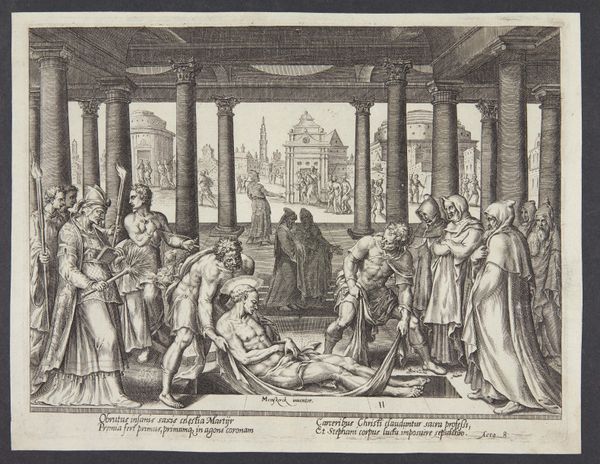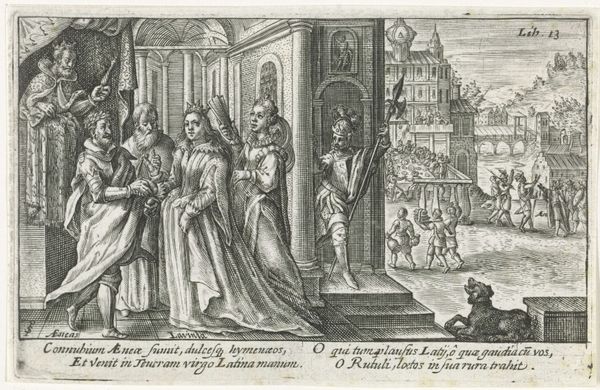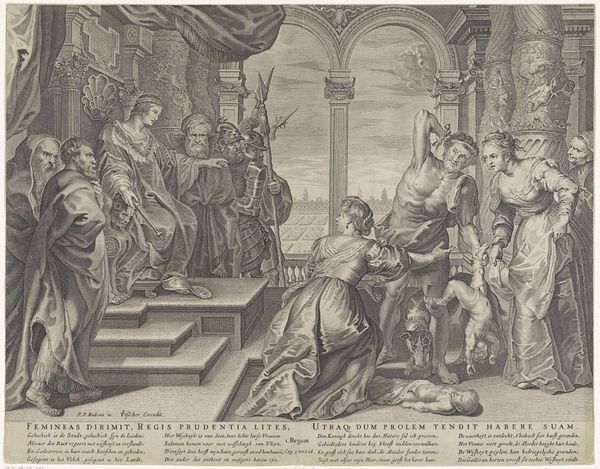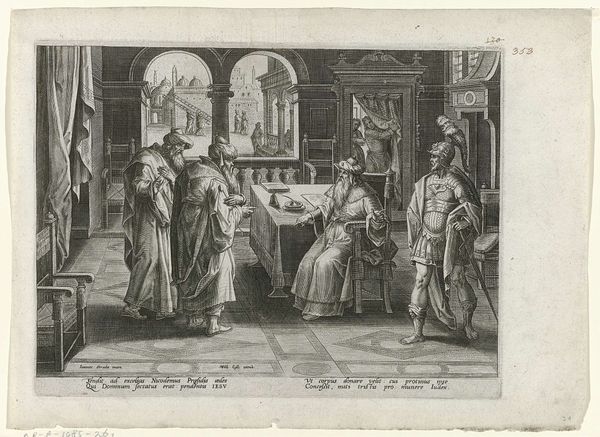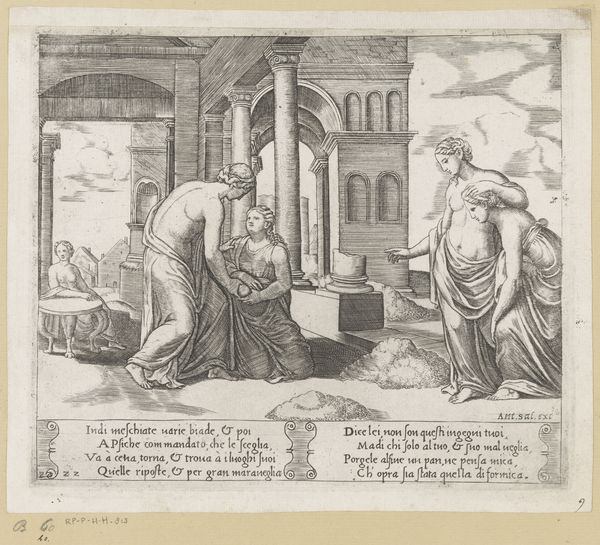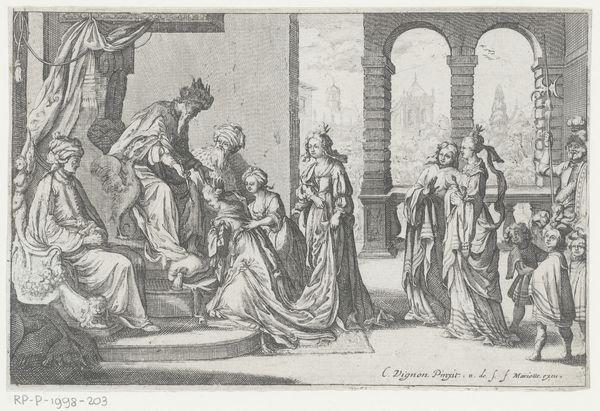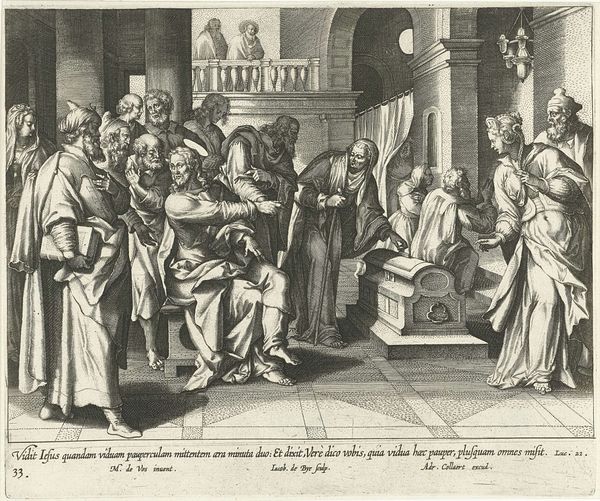
print, engraving
#
narrative-art
# print
#
old engraving style
#
figuration
#
line
#
history-painting
#
italian-renaissance
#
engraving
Dimensions: height 208 mm, width 237 mm
Copyright: Rijks Museum: Open Domain
Curator: Looking at "The Expulsion of Hagar and Ishmael," an engraving dating back to 1580 by Willem Thibaut, I am immediately struck by the raw emotionality conveyed through such meticulously rendered lines. The palpable distress, the body language... Editor: Yes, there's a compelling tension between the visible grief and the implied context, wouldn’t you agree? Here, the material processes matter too: an engraving like this would have been created through a series of intensely physical actions. Consider the engraver meticulously carving into the metal plate to produce this scene for wider distribution. This labour-intensive aspect needs our attention. Curator: Absolutely. I am considering its public function as a disseminator of moral tales. Prints like these brought biblical stories, traditionally reserved for elite consumption, into broader circulation and shaped perceptions, and even influenced the cultural capital around certain familial constructs. Editor: Good point, because the artist and workshop would depend on the access to and cost of the tools. Copperplates were in limited quantities and were thus more expensive to come by. Moreover, what kind of impact did the dissemination and eventual ownership of these engravings produce regarding the reception of this story? Were they regarded with awe, simply consumed as illustrative material or even challenged? Curator: Well, the visual language seems pretty direct: Sarah's triumph, Abraham’s sorrow, Hagar's desperation… Do you see this a reflection on anxieties around succession or divine favour, perhaps made accessible through relatively cheap printmaking? Editor: Exactly! But also let’s zoom in on that figure of Ishmael: with his bow and arrow. Isn’t this meant to imply their pending hardship in the desert? Here, it serves more than one function. While meant as merely illustration, isn't the construction of narrative around "The Expulsion of Hagar and Ishmael," an active attempt to moralise, justify power structures? Curator: Undoubtedly! These prints performed a critical ideological role in their time and continue to prompt vital inquiries about social power dynamics and cultural values. It really is striking how it allows us to peek into such long ago and consider its modern echoes. Editor: Indeed. A simple engraving becomes such a resonant reminder of art's capacity to affect cultural discourse across eras and in distinct fashions.
Comments
No comments
Be the first to comment and join the conversation on the ultimate creative platform.
